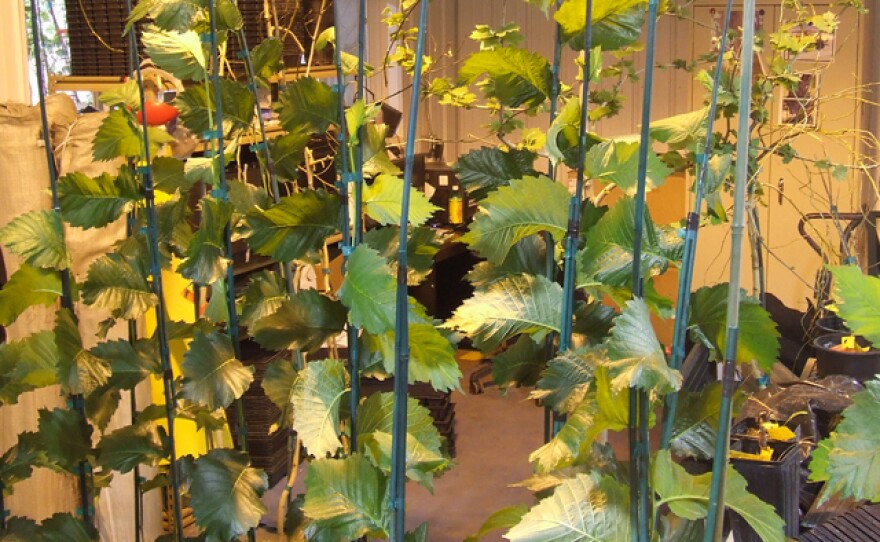by Peter Payette for The Environment Report
There’s a new book out today about an unusual conservation project based in northern Michigan. For most of the last two decades, a man from Copemish has been cloning old trees around the world. David Milarch believes the genetics of these trees are superior and could be useful in the era of climate change. The author of the book says he might have a point.
Back in the year 2000, an elm tree not far from David Milarch’s home was diagnosed with Dutch elm disease.
It was not just any elm.
It was the National Champion American elm at the time. That means it was the largest known elm in the country. Milarch tried to heal the tree with a soil treatment but it died. He did manage to clone the Buckley elm.
Today at the Archangel Ancient Tree Archive, there are about a dozen copies of the tree.
"Here’s the Buckley elm, the greatest elm in America. And it’s living on and it can be utilized. That’s really what it’s all about."
David Milarch is feeling pretty vindicated these days, with the record-breaking warm weather we just experienced in March. He decided global warming was a dire threat twenty years ago because he thought the forests looked sick. He thinks what we need are some better trees.
Trees take carbon out of the atmosphere and do a host of other things to regulate ecosystems.
But as Milarch sees it, the trees around today are garbage. That’s because loggers take the best trees first and places like Michigan have been pretty heavily logged.
"They always went in and took the biggest, straightest, clearest log, and left the crooked, the branchy, the sick or the puny behind. The money wasn’t in it. So that’s what’s been allowed to reproduce."
That’s why Milarch has spent the last couple decades trying to clone big old trees. So the genetics will be preserved.
Meryl Marsh runs the day to day operations here. And she sometimes climbs trees hundreds of feet tall to gather buds. Marsh says old trees are hard to clone.
"It’s like asking your grandparents to produce offspring, or a really old horse to breed."
Archangel has cloned 48 different tree species. And this work has been big hit with the media.
After all, cloning an ancient tree makes a good story.
And now to the mountain of news clips Milarch can add a book about his project.
Jim Robbins is a regular contributor to the New York Times.
He says forest ecology is not the most well understood science and little is known about tree genetics.
"And David has said, well, since we don’t know, let’s save these proven survivors and let’s plant them and protect them in other places in case something happens. And if those genetics are important, and of course genetics are important in every other field, then we’ll have those protected. And that was a good idea according to a lot of scientists I talked to."
Robbins lays out the science of trees and David Milarch’s story in his new book The Man Who Planted Trees.




